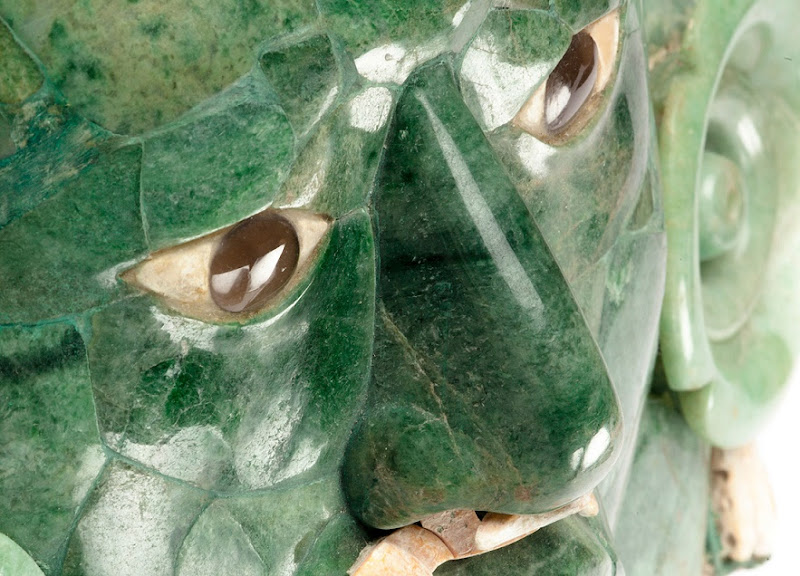A series of temporary exhibits called “One piece, one culture” starts with the exhibition “The Calakmul Mask. Universe in Jade.” During its inauguration, Teresa Franco, director of the National Institute of Anthropology and History (INAH), added that through a single piece highly significant many elements of thought and the worldview of one of the greatest cultures could be explained: the Mayans.

Teresa Franco said that two of the first halls are consecrated to an experience that appeals to the public’s senses through visual, sound and graphic effects that produce a lyrical space; afterwards a third space allows the participant to be alone with the mask in a very intimate space.
Mayan cosmogony is not a lineal thought, in it the divinity, nature, animals, humans, life and death are planes that intertwine and coexist continually; all three levels of the cosmos –the celestial, the worldly and the underworld– are stratus that have clear frontiers, but are in permanent conjunction.

The Calakmul Mask is a funerary piece elaborated in jade mosaic, shell and gray obsidian, found in Tomb 1 in Structure VII, in the archaeological zone of the same name, in the state of Campeche, whose antiquity goes back to 660 and 750 AD.
The curator, Pilar Cuairan, indicated that given its beauty and sacred connotation, jade was the most important component of funerary masks of Mayan sovereigns, whose funerary attire gave them the identity they needed in order to travel to the underworld, and the mask gave them the face of the god of corn. She added that jade was a Stone associated with water and it was related to the sky and the sea as principal elements of creation, as symbols of breath, fertility and rebirth. The ears of the mas have the shape of a four petal flower which represents the Mesoamerican model.
For the Mayans, the first man was modeled after the three most important grains of corn, which is why corn is the mayor sustenance source of Mayan people and a central element of Mexican cultures, said the curator.
Source: INAH via Art Daily [August 31, 2015]